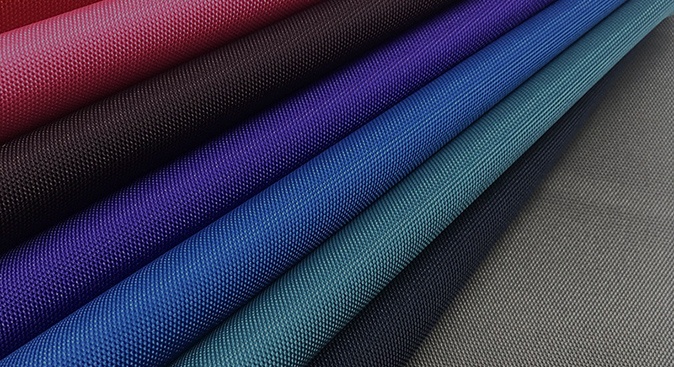Definition and relevance
210D PU coated fabric is a specialized textile material commonly used in bag manufacturing. It consists of a base material woven from 210 denier (D) nylon threads, which provides strength and durability, and is coated with polyurethane (PU) to enhance its performance characteristics. The PU coating adds a protective layer that increases the fabric’s resistance to abrasion, tearing, and water penetration.
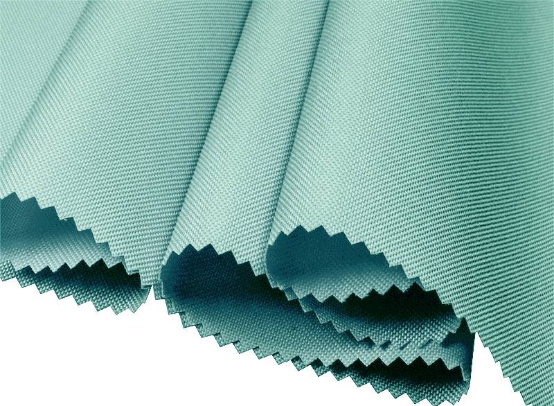
Choosing the Right 210D PU Oxford Fabric for Bags
Factors to Consider
Strength and Durability: Assess the fabric’s strength and durability to ensure it can withstand the intended usage and load-bearing requirements of the bag.
Water Resistance: Check the fabric’s water-resistant properties to ensure it provides adequate protection against moisture and rainfall.
Abrasion Resistance: Consider the fabric’s ability to resist wear and tear, especially if the bag will be subjected to rough handling or outdoor activities.
Colorfastness: Evaluate the colorfastness of the fabric to ensure it retains its color without fading over time or with exposure to sunlight or washing.
Weight and Thickness: Consider the fabric’s weight and thickness to determine its suitability for the desired bag design and desired level of sturdiness.
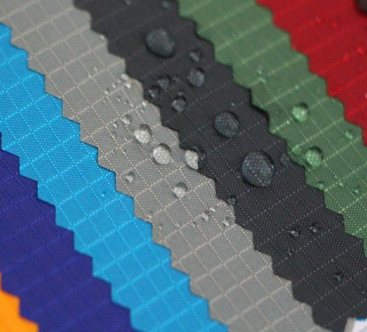
Evaluating Suppliers
Reputation: Research and evaluate suppliers’ reputation in the market, considering factors such as their experience, customer reviews, and track record of delivering quality products.
Expertise: Choose suppliers with expertise in manufacturing 210D PU Oxford fabric for bags, as they are more likely to understand the specific requirements and provide appropriate solutions.
Compliance: Ensure that the suppliers adhere to industry standards and regulations, such as environmental regulations, to ensure responsible sourcing and production practices.
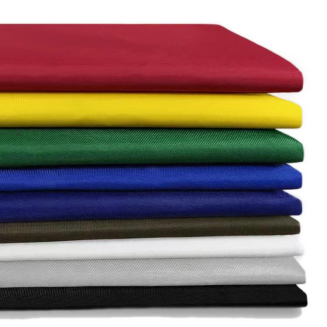
Requesting Fabric Samples
Contact potential suppliers and request fabric samples to evaluate their quality, performance, and suitability for your specific bag manufacturing needs.
Test the fabric samples for strength, durability, water resistance, and other desired characteristics to validate their performance claims.
Consider conducting additional tests, such as colorfastness testing or abrasion resistance testing, to ensure the fabric meets your specific requirements.
Evaluate the samples for consistency in terms of color, texture, and overall quality.
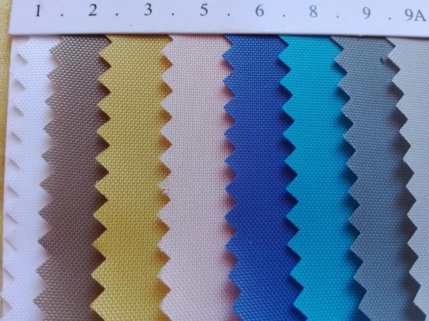
Why do Manufacturers Choose 210D PU Coated Fabric ?
Core Materials and PU Coating Process
Core Materials: 210D PU coated fabric is composed of a base material woven from 210 denier (D) nylon threads. This nylon base provides the fabric with strength, durability, and resistance to tearing.
PU Coating Process: The fabric is further enhanced through the application of a polyurethane (PU) coating. This coating is applied to the fabric’s surface, creating a protective layer that offers additional performance benefits.
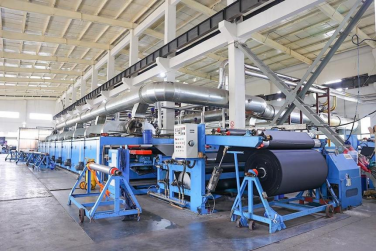
Versatile Applications in Bag Production
210D PU coated fabric finds versatile applications in bag production across various industries and bag types. It is commonly used in the manufacturing of backpacks, duffel bags, luggage, sports bags, and outdoor gear.
Its versatility allows bag manufacturers to cater to a wide range of customer needs, including travel bags, sports bags, and everyday-use bags.
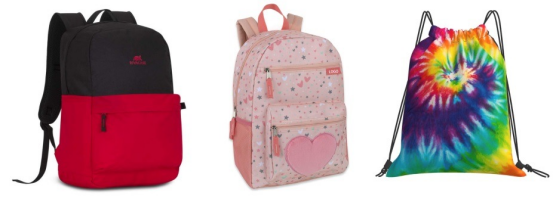
Performance Attributes
Durability and Strength: 210D PU coated fabric is known for its exceptional durability and strength. It can withstand heavy loads, rough handling, and demanding conditions, making it ideal for bags that require long-lasting performance.
Water Resistance: The PU coating on the fabric provides excellent water resistance, protecting the bag’s contents from moisture and rainfall. This feature is particularly valuable for outdoor bags or those used in travel where protection from the elements is crucial.
Abrasion Resistance: The PU coating enhances the fabric’s resistance to abrasion, making it less prone to wear and tear. This attribute ensures that bags made from 210D PU coated fabric maintain their appearance and functionality over time.
Lightweight: Despite its durability, 210D PU coated fabric is relatively lightweight. This characteristic allows bag manufacturers to create bags that are easy to carry and comfortable for users, particularly in travel or outdoor settings where weight matters.
Design Customization: The fabric can be easily dyed in various colors and patterns, offering design customization options. Bag manufacturers can create visually appealing bags that align with market trends and consumer preferences.
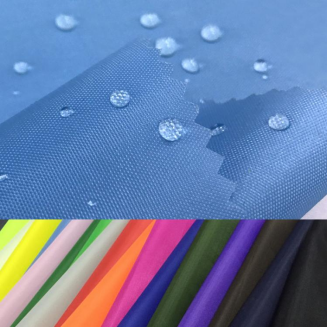
Benefit of Bag Manufacturers Choose 210D PU Coated Fabric
Enhanced Longevity and Robustness
By opting for 210D PU coated fabric, bag manufacturers can ensure that their products are built to last. The fabric’s core materials, such as the 210 denier (D) nylon base, provide strength and durability, making bags resistant to tearing and wear. This increased robustness translates into a longer lifespan for the bags, reducing the need for frequent replacements and contributing to customer satisfaction
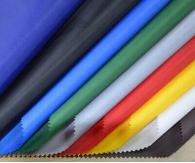
Weatherproof Properties
One of the standout benefits of 210D PU coated fabric is its weatherproof nature. The polyurethane (PU) coating on the fabric acts as a protective barrier, preventing water from penetrating the material. This weather resistance makes bags constructed from 210D PU coated fabric suitable for various environments and climates. Whether it’s a sudden rain shower or accidental spills, the bags can keep their contents dry and protected, ensuring peace of mind for users.
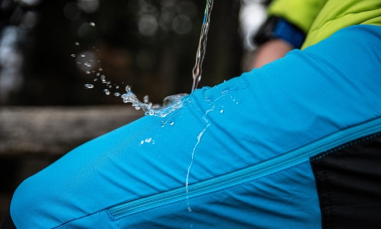
Customizability and Design Options
Another advantage of 210D PU coated fabric is its versatility in terms of design customization. Bag manufacturers can leverage the fabric’s ability to be easily dyed in various colors and patterns, offering a wide range of options to meet specific brand requirements. This customizability allows manufacturers to create bags that align with their brand identity and cater to the preferences of their target market. It also enables differentiation in a competitive market, allowing brands to stand out and capture consumer attention.
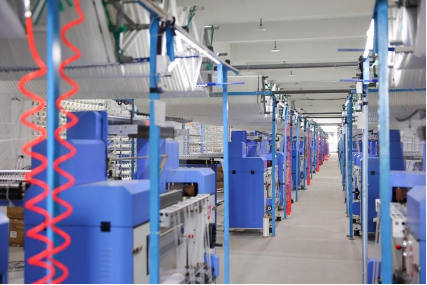
Procurement Challenges for Bag Manufacturers
Sourcing Considerations and Availability
Limited Suppliers: Finding reliable suppliers who offer 210D PU coated fabric can be a challenge, especially for manufacturers operating in regions with limited textile resources or a less developed supply chain for specialized fabrics.
Global Availability: The availability of 210D PU coated fabric may vary across different regions, with certain markets having more established supply networks and a wider range of fabric options.
Dependence on Import: In some cases, bag manufacturers may have to rely on importing 210D PU coated fabric, which can lead to additional challenges such as longer lead times, higher transportation costs, and potential customs and import regulations.
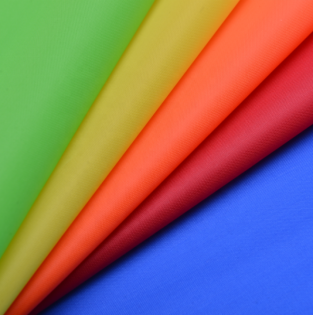
Quality Variations and the Risk
Consistency in Quality: Maintaining consistent quality across different batches or suppliers of 210D PU coated fabric can be a concern. Bag manufacturers need to ensure that the fabric they procure meets their specified quality standards, such as strength, durability, and water resistance.
Risk of Counterfeit Products: The popularity and demand for 210D PU coated fabric can make it susceptible to counterfeit products in the market. Bag manufacturers need to exercise caution and source the fabric from trusted and verified suppliers to mitigate the risk of purchasing substandard or counterfeit materials.
Industry Standards and Regulations
Environmental and Safety Regulations: Bag manufacturers must ensure that the 210D PU coated fabric they procure complies with relevant industry standards and regulations, particularly in terms of environmental sustainability, chemical usage, and safety requirements.
Social Compliance: Manufacturers also need to consider the social compliance aspects of their supply chain, such as labor rights, fair wages, and ethical sourcing practices. Ensuring that the suppliers of 210D PU coated fabric adhere to these standards is essential for maintaining a responsible and sustainable supply chain.
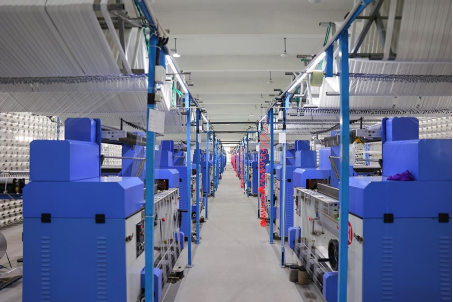
Ensuring Quality Control in 210D PU Coated Fabric
Quality Control Processes
Raw Material Inspection: Conduct thorough inspections of the raw materials used in the production of 210D PU coated fabric, including the nylon threads and polyurethane coating. This ensures that the materials meet the required specifications and are of high quality.
Manufacturing Process Control: Implement quality control measures at each stage of the manufacturing process, including weaving the nylon threads, applying the PU coating, and curing or drying the fabric. Regular inspections, testing, and adherence to standardized procedures help maintain consistent quality throughout the production process.
Testing and Quality Assurance: Perform various tests on the fabricated 210D PU coated fabric to verify its performance attributes such as strength, durability, water resistance, colorfastness, and abrasion resistance. These tests can include tensile strength testing, water repellency testing, colorfastness testing, and abrasion resistance testing.
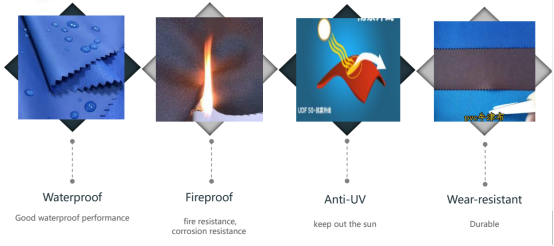
Collaboration
Establish Relationships: Collaborate with trusted suppliers and manufacturers who have a proven track record of producing high-quality 210D PU coated fabric. A strong partnership ensures a reliable supply chain and enhances the transparency and communication required for effective quality control.
Supplier Audits: Conduct regular audits of suppliers’ manufacturing facilities to assess their quality control processes, adherence to industry standards, and overall production capabilities. This helps ensure that the fabric is manufactured in a controlled and compliant environment.
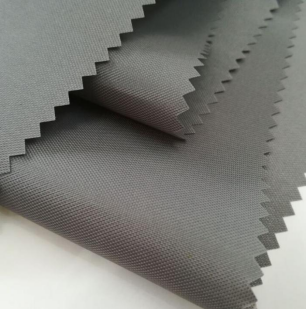
Key Quality Indicators
Tensile Strength: Test the fabric’s tensile strength to measure its ability to withstand pulling forces without tearing or breaking. This is an important indicator of the fabric’s overall durability and longevity.
Water Resistance: Evaluate the fabric’s water resistance through testing to ensure it provides the desired level of protection against moisture and rainfall.
Colorfastness: Perform colorfastness tests to determine the fabric’s ability to retain its color over time, even with exposure to sunlight and washing.
Abrasion Resistance: Test the fabric’s resistance to abrasion to assess its ability to withstand wear and tear, especially in high-friction areas
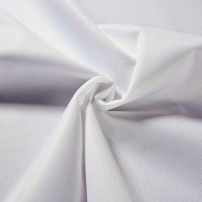
Conclusion
In conclusion, 210D PU coated fabric plays a significant role in bag manufacturing due to its unique characteristics and advantages. The fabric’s composition, which includes a nylon base and a polyurethane coating, provides enhanced durability, strength, and water resistance, making it suitable for various bag applications. Bag manufacturers choose this fabric for its longevity, robustness, weatherproof properties, and customizability.
To maintain quality control, manufacturers implement rigorous processes throughout fabric production, including raw material inspection, manufacturing process control, and thorough testing. Key quality indicators such as tensile strength, water resistance, colorfastness, and abrasion resistance help verify the fabric’s performance and durability.
Ultimately, the choice of 210D PU coated fabric empowers bag manufacturers to create high-quality products that not only satisfy customers but also reinforce their brand reputation. With careful attention to quality control, manufacturers can continue to leverage the advantages of 210D PU coated fabric and meet the evolving demands of the bag industry.



